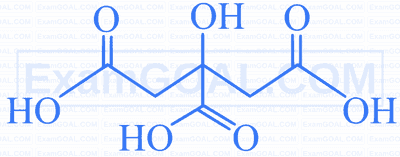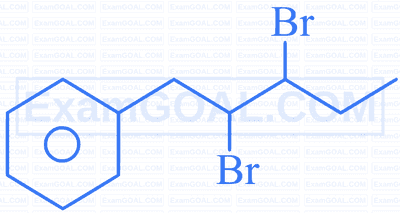Cyclohexanol undergoes a series of reactions as given. Identify compound (iv).
$\mathrm{C}_6 \mathrm{H}_{11} \mathrm{OH}+\mathrm{CrO}_3 \rightarrow(\mathrm{i})+\mathrm{C}_6 \mathrm{H}_5 \mathrm{MgI} \rightarrow(\mathrm{ii})+$ dil. $\mathrm{HCl} \rightarrow(\mathrm{iii})+$ Conc. $\mathrm{H}_3 \mathrm{PO}_4 \rightarrow(\mathrm{iv})$




Match the structures in Column I with their correct IUPAC names given in Column II.
| Column I | Column II | ||
|---|---|---|---|
| A. |  |
P. | 2,3-Dibromo-1-phenylpentane. |
| B. |  |
Q. | 2,3- Dibromohexanedial. |
| C. |  |
R. | 2- ( 4- isobutylphenyl) propanoic acid |
| D. |  |
S. | 2- Hydroxy-1,2,3- propanetricarboxylic acid. |
Identify $[\mathrm{X}]$, the final product formed when 2 moles of Ethanal undergoes the following series of reactions with reagents [(i) to (iv)]

Two statements, one Assertion (A) and the other Reason (R) are given. Choose the correct option.
Assertion: Maltose, a disaccharide, is a reducing sugar and is obtained by the partial hydrolysis of starch in presence of the enzyme diastase.
Reason: Hydrolysis of one mole of Maltose gives one mole each of $\alpha-D-$ Glucose and $\beta-D-$ Fructose.